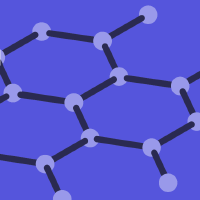Topic Menu
► Topic MenuTopic Editors


Advances and Applications of 2D Materials
Topic Information
Dear Colleagues,
Two-dimensional (2D) materials are an emerging class of nanostructured low-dimensional materials. The change in properties, caused by a reduction in the dimensionality of 2D materials, means that they are often well-suited to applications where the bulk material would be unsuitable. Remarkable applications of 2D materials are already uncountable, but the world of 2D materials has only been partly explored, numerous discoveries are still to come.
Therefore, we welcome submissions from Applied Sciences, Applied Nano and Nanomaterials that reveal the huge potential of 2D materials, including, but not limited to, the following topics:
- Graphene;
- Xenes: silicene, stanene, phosphorene, borophene, tellurene, etc.
- Transition Metal Dichalcogenides;
- Hexagonal-Boron Nitride;
- MXenes;
- 2D perovskite;
- Topological materials;
- Synthesis and modelling of 2D materials;
- Van der Waals heterostructures;
- 3D/2D materials hybrid systems;
- 2D materials characterization and metrology;
- Electronic/optoelectronic applications of 2D materials: logic devices, high frequency electronics, photodetectors, THz electronics;
- 2D materials based spintronics;
- 2D materials based sensors: environmental, biomedical applications;
- Energy: thermoelectrics, batteries and supercapacitors, hydrogen evolution reaction, light harvesting…
Dr. Filippo Giannazzo
Dr. Ivan Shtepliuk
Topic Editors
Participating Journals
| Journal Name | Impact Factor | CiteScore | Launched Year | First Decision (median) | APC |
|---|---|---|---|---|---|

Applied Sciences
|
2.7 | 4.5 | 2011 | 16.9 Days | CHF 2400 |

Applied Nano
|
- | - | 2020 | 23.5 Days | CHF 1000 |

Nanomaterials
|
5.3 | 7.4 | 2010 | 13.6 Days | CHF 2900 |

Electrochem
|
- | - | 2020 | 22.3 Days | CHF 1000 |

Materials
|
3.4 | 5.2 | 2008 | 13.9 Days | CHF 2600 |

MDPI Topics is cooperating with Preprints.org and has built a direct connection between MDPI journals and Preprints.org. Authors are encouraged to enjoy the benefits by posting a preprint at Preprints.org prior to publication:
- Immediately share your ideas ahead of publication and establish your research priority;
- Protect your idea from being stolen with this time-stamped preprint article;
- Enhance the exposure and impact of your research;
- Receive feedback from your peers in advance;
- Have it indexed in Web of Science (Preprint Citation Index), Google Scholar, Crossref, SHARE, PrePubMed, Scilit and Europe PMC.

